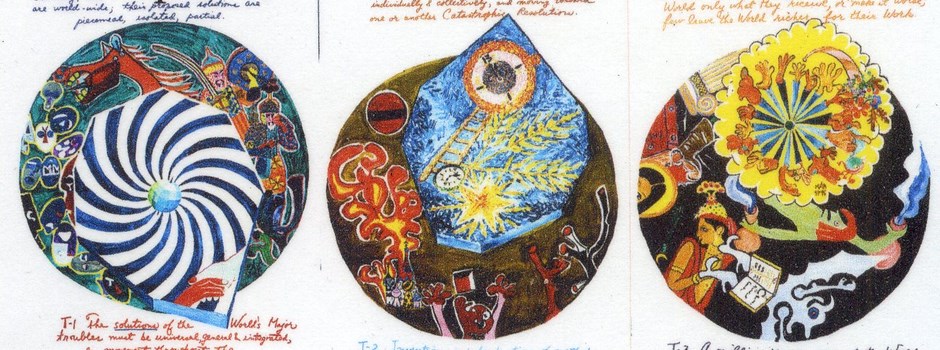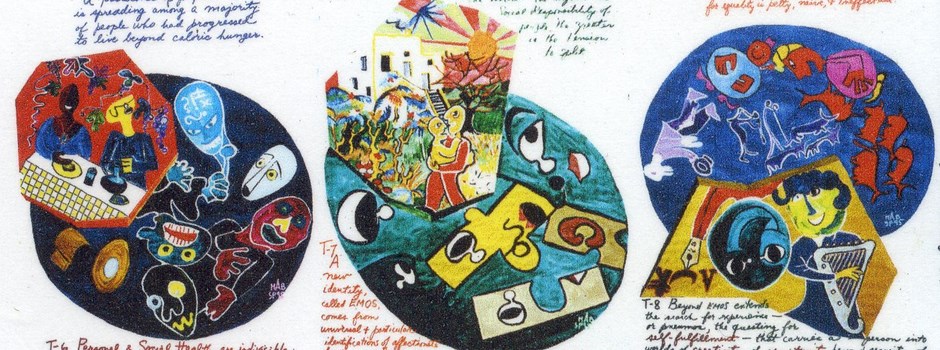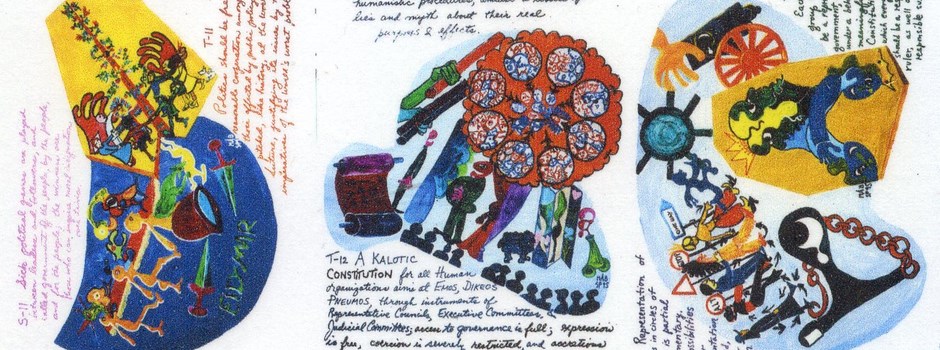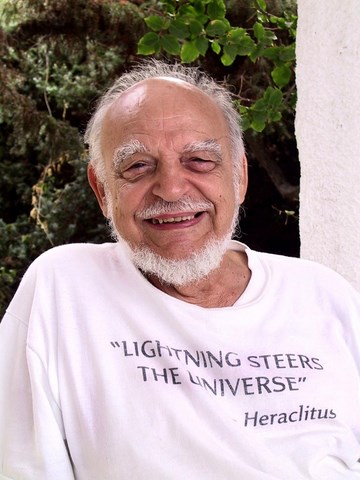ART & Politics
Forty Stases and Theses was originally written by Alfred de Grazia in 1971, and delivered to a faculty seminar at New York University. It inspired Italian artist and psychoanalyst Licia Filingeri, of Genoa, a member of the Arte Povera movement, to create a series of 40 paintings in acrylic on paper. The work was completed in October 1995 in her country home in Terrile, Liguria, with Alfred de Grazia ading the text of the stases and theses in his own handwriting. They called it Quantavolution Art, meaning that the art symbolizes and proposes large-scale, extensive, radical change over short time periods.
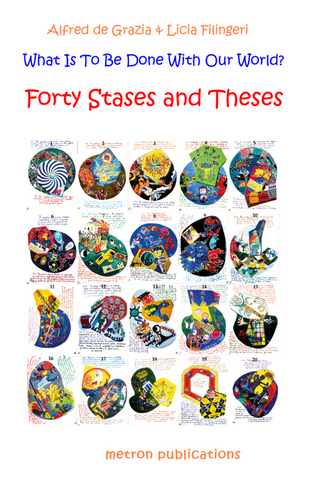
Definitions
Each stasis requires proof, as does each thesis. They are provided mainly in the larger work: Kalos: What Is To Be Done With Our World? (Bombay, India, 1971).
The stases, read in succession, from number 1 to 40, afford a general diagnosis of conditions. Each thesis stands opposite a related stasis and proposes a general alternative to it. The theses thereupon set forth a full and integrated system for the betterment of man’s condition - the world of Kalos.
A world order exists, in fact, a kind of world government exists. But it is bad.
The purpose here is to declare in what forty general respects it is bad and how in each regard a solution is possible that will altogether add up to a beneficial and benevolent world order and government.
The Authors
Licia Filingeri is a psychoanalyst active in Genoa (Italy). She specializes in young colleagues participating in clinical groups. She pursued her artistic activity from 1972 , for three decades, expressing herself in painting and sculpture inspired by social themes. Since 1976, she collaborates with her husband, sculptor and archaeologist Pietro Gaietto, taking care of the editing and graphics aspects of his work.
e-mail: f i l i n g e r i @ f a s t w e b n e t . i t
website: http://www.grazian-archive.com


